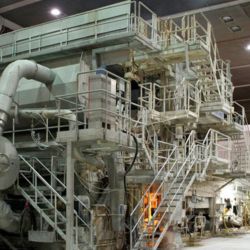Can You Use Recycled Paper in Your Print Marketing?
The choice to utilize recycled paper and eco-friendly products are nil new. We all go through using recycled products is best for the environment, but how easygoing is it for organisations to accept it for themselves?
Did you know: A humongous 91% of all printed paper today is not from recycled substantial?
Every ton of new paper created requires a definite quantity of three tons of wood and 19,000 gallons of water. For some linear perspective, that’s the same quantity of water it takes to fill up the average human activity swimming pool. Also, each ton of new paper produces 2,278 pounds of solid-state waste material!
In Your Print Marketing, How Can You Use Recycled Paper?
Dislike the popularity of paper not created from recycled substantial, and it’s easier than ever so to use recycled paper in your print merchandising. Recycled paper is being offered as a choice for a comprehensive collection of print jobs, from business cards to newsletters and more. But materials aren’t the only style to reduce your marketing material footprint. Modification to your operation and targeting can also have an intended effect (more on that in a minute).
First, here’s what’s deserves knowing about recycled and non-recycled print marketing materials.
Recycled Paper advert to paper made using pre-consumer materials, post-consumer materials or a sequence of the two. Paper with more pre-consumer and post-consumer fibres requires fewer virgin materials. The much-recycled material used in the paper, the more eco-friendly that paper get. Almost paper made with pre-consumer and post-consumer fiber will still consider some virgin materials to keep the paper’s quality and lastingness.
Pre-Consumer Fiber, also known as pre-consumer waste, bring up to materials used to make recycled paper. Pre-consumer fibers let in materials that have not been used by consumers but have been thrown-away during creating from raw materials or other processes of manufacturing. Pre-consumer fibers may include paper fixings, de-inked materials or even paper products that never sold-out and never reached consumers.
Post-Consumer Fiber also adverts to materials used to make recycled paper. Paper, paperboard, and few other recycled materials are used to create the post-consumer fiber. These materials have already been used by the user and have been discarded for recycling.
De-inked Material is a complete paper product, such as magazines or books, that has had the inks, fillings and coatings removed for it to be recycled.
Top Quality Recovered Paper is used to making products that couldn’t be made with just any kind of recycled material. Although many products can be made from demotic pre-consumer and post-consumer materials, some necessitate materials that haven’t been in use as much and are therefore more substantial and more durable.
Virgin Paper is paper that does not use recycled materials. Instead, it is made from a variety of brand new raw materials (typically wood pulp).
While printing with recycled paper may price a bit more than everyday paper stock, the price obstructer is much lower today than it once was. Most printers offer some recycled paper, making it easier to find a recycled paper solution that’s low-cost and appropriate for your print marketing.
Fun Fact: The recycling sign was first created in 1970 by Gary Anderson, a student at the University of Southern California. Anderson was one of over 500 newcomers in a oppose held by the Container firm of America to design a sign that would help encourage the recycled materials they used in their products. The design was yet adopted industry-wide and is a familiar symbol to most people today.


